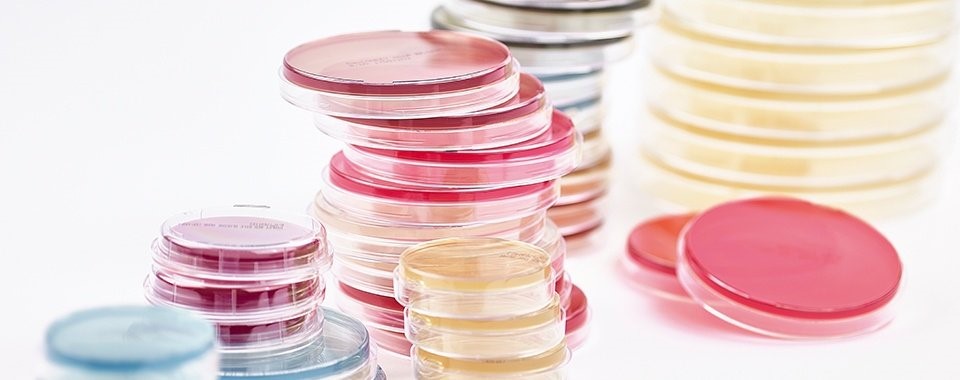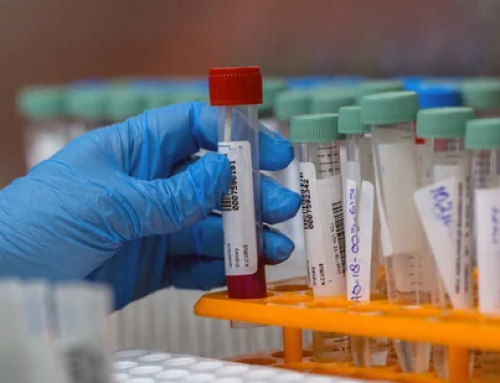Nutrient agar plate is prepared by pouring nutrient agar medium which is commonly used for non-fastidious microbes and for quality control check. These plates are also used at times in steps or biochemical or serological testing to assess purity. It is a general purpose media used for routine culture or to ensure prolonged microbial survival, thus becoming an ideal media for teaching purposes. It is the most common non-selective media for cultivation and enumeration of bacterial population.
Composition of Nutrient Agar Media
If nutrient agar ready-made powder is not present in lab, this composition can be used:
| S.N | Ingredients | Gram/liter |
| 1. | Peptone | 5.0 |
| 2. | Yeast extract | 1.5 |
| 3. | Beef extract | 1.5 |
| 4. | Sodium chloride | 5.0 |
| 5. | Agar | 15.0 |
| Final pH at 25°C: 7.4 ±0.2 | ||
Principle of Nutrient Agar Media
- The peptone is the source of amino acids for the bacteria.
- The beef extract is the primary source of carbon.
- The media can also contain other components like vitamins, trace minerals, organic compounds, and salts to enhance the growth of different organisms.
- Sodium chloride is added to the medium for maintaining osmotic equilibrium prevent pH change of the medium during growth.
- The distilled water provides a medium to dissolve the nutrients.
- Agar is the solidifying agent for providing a stable surface for the organism to grow. This also helps in observation of colony morphology and enumeration.
Uses of Nutrient Agar Media
- Used for culturing less fastidious organisms or non-fastidious organisms as a general medium.
- Used for routine culture of microbes from typical environmental samples like water, food, and air.
- Often used for the demonstration and teaching purposes in microbiology labs as it doesn’t contain harmful substances. It can be easily used to show isolation of multiple microorganisms hands-on.
- Use of nutrient agar media is recommended by standard methods as it comes with a simple composition without any hassle, unlike sheep blood agar media etc.
- Used for the preservation of microbes for an extended period of time without risk of contamination, unlike more nutritious medium.
- Used in purity testing technique before different biochemical tests and serological tests.
- Addition of biological fluids like sheep blood, serum, egg yolk, etc. to this media can make it more selective for fastidious organisms.
Limitations of Nutrient Agar Media
- Different organisms can have different growth requirements, making them have variable growth patterns on nutrient agar media. This can lead to chances of making the nutrient media unreliable during process of microbe isolation.
- Chances of contamination is high with nutrient agar media as it is a non-selective type of media and many different types of microbes can grow on it.
- Nutrient agar media cannot be used as a selective medium for cultivation of fastidious organisms as it has common nutrients and do not contain specific nutrients for their requirement.
- Nutrient agar media mostly allows bacterial isolation and is not used for microorganisms like fungi.
- Some microbes on nutrient agar media might have similar colony morphology, thus making it difficult to distinguish while isolation.
If your industrial lab is looking for ready-made Nutrient Agar Plates, connect with ADVANCELLS at [email protected] to get more info on our range of microbial culture products.






Leave A Comment